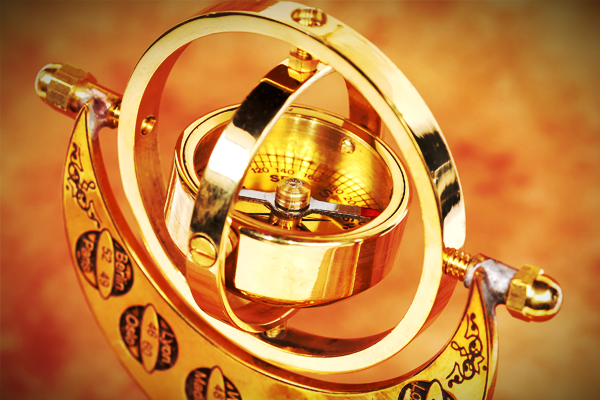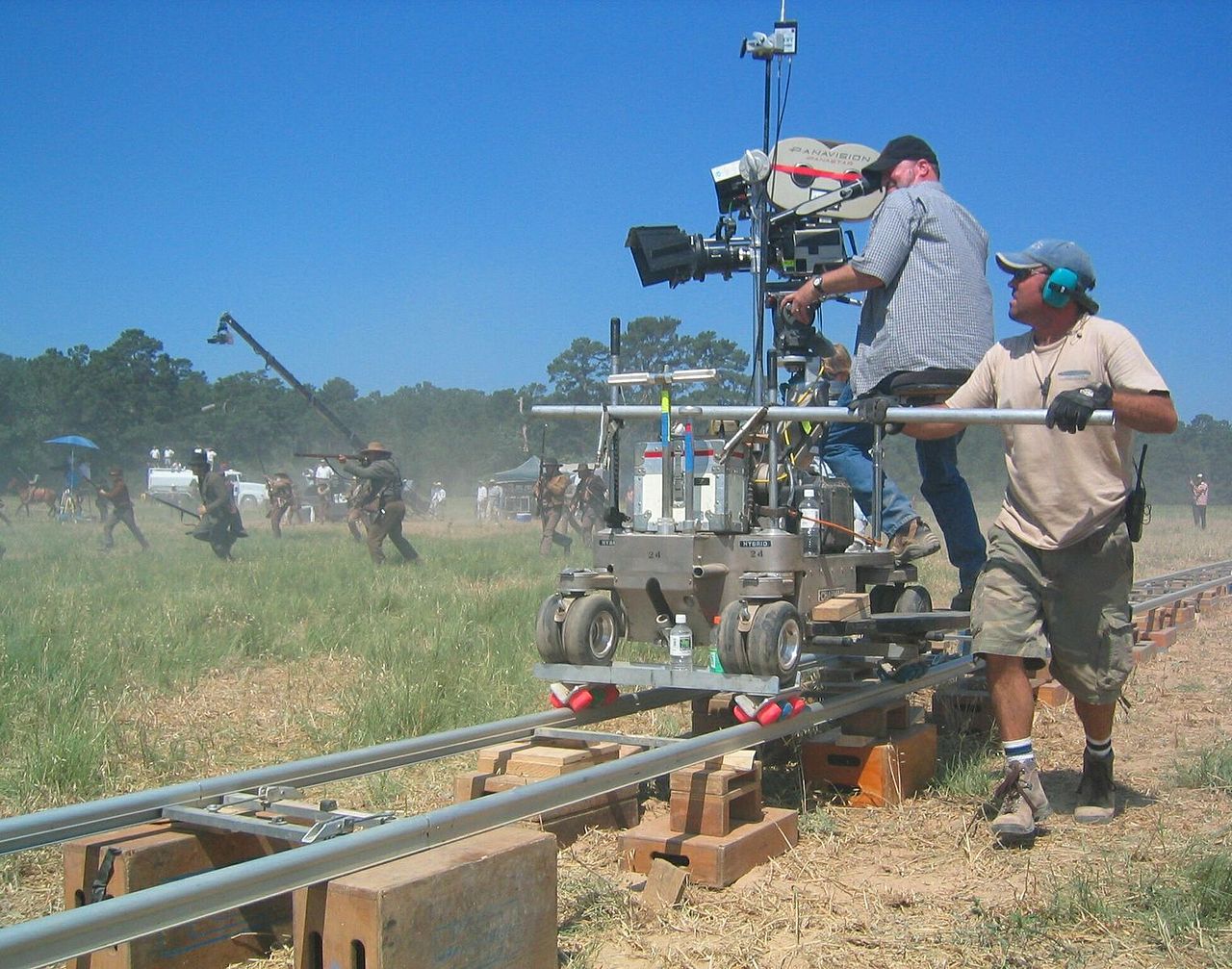What technology reaches back to the ancient Greeks, helped navigation during the Age of Exploration, and even enabled the NASA space program? 3-Axis Gimbals. And now, with the rapid increase of their performance-to-price value, three axis gimbals are revolutionizing modern media services. With the advent of brushless handheld stabilizers and gimbal systems suspended from drones, high end production value is now available at reasonable pricing. If you're considering video production to enhance your branding, now is the best time to contact ICOSA Media Services.
Known at least as far back as the times of Philo of Byzantium, a system of interlocking rings - known as gimbals - allows objects to remain independent of the external rotation of its support. While simple to understand when you look at one, the results still appear quite magical.
Gimbals enabled the Age of Exploration by stabilizing a ship's compass, allowing for more accurate measurements and more precise location mapping. While latitude was relatively easy to figure out with simple observations of the sun's maximum height in the sky as seen at noon, longitude was much more difficult - especially at sea with constant changes to a ship's roll, pitch, and yaw. Many great minds worked on ways to solve this challenges and let navigators know where they were around the world. The result has changed the course of history.
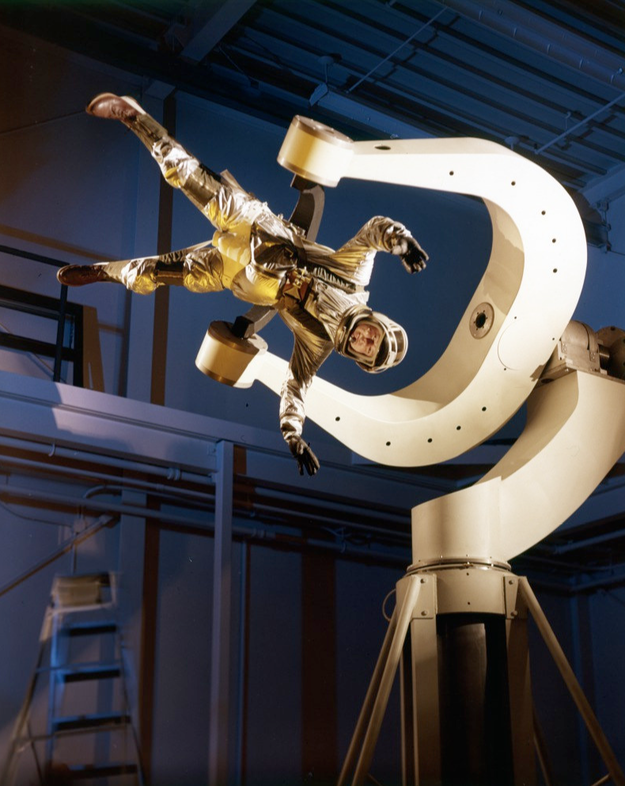 Over the years, NASA has also found many uses for gimbals, first and foremost for their navigational instruments. Its uses also range from training astronauts to handle the g-forces of space travel to satellite tracking and dynamic image stabilization. Rocket engines and thrusters are also often on gimbal systems in order to have greater control over the direction of their force. The American aerospace industry, including publicly funded research and R&D initiatives from private firms like Ball Aerospace and the Sierra Nevada Corporation, have dramatically advanced the state of the art. Below, you can see a photo of Ball Aerospace's Space Based Space Surveillance Gimbal.
Over the years, NASA has also found many uses for gimbals, first and foremost for their navigational instruments. Its uses also range from training astronauts to handle the g-forces of space travel to satellite tracking and dynamic image stabilization. Rocket engines and thrusters are also often on gimbal systems in order to have greater control over the direction of their force. The American aerospace industry, including publicly funded research and R&D initiatives from private firms like Ball Aerospace and the Sierra Nevada Corporation, have dramatically advanced the state of the art. Below, you can see a photo of Ball Aerospace's Space Based Space Surveillance Gimbal.
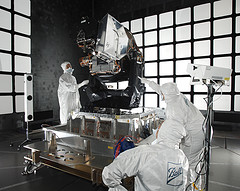
Just like other NASA-developed spinoff technologies, the original investment in advancing gimbals has rippling returns. In addition to the micro accelerometers in everyone's smartphones, the field of modern videography and film production are now benefitting greatly from successful spinoffs. For a relatively low cost, a film director can achieve shots that would have previously only been possible with carefully planned out crane or dolly shots.
Historically, smooth motion shots required meticulous planning and the construction of expensive tracks or counterweight balancing systems. To the right is an example from the set of the movie The Alamo. It shows crews using a dolly to achieve a tracking shot during a battle scene. A jib crew can also be seen in the background. These processes cost a lot of time and money, which is why they were usually reserved for high budget Hollywood studios and their blockbuster productions.
With the advent of unmanned aerial vehicles, or drones, cranes may be becoming obsolete. DJI is an industry leader with their Phantom 2 and Spreading Wings platforms. They seem to have become the preferred filming drone based on my conversations with the aerial operators I know. In their development of aerial vehicles that can carry cameras, the issue of image stabilization became apparent, as it did to NASA when trying to stabilize images from cameras aboard satellites and spacecraft. So they used a three axis gimbal system powered with brushless electric motors. Below is an image of a camera suspended below a DJI Spreading Wings uav system.
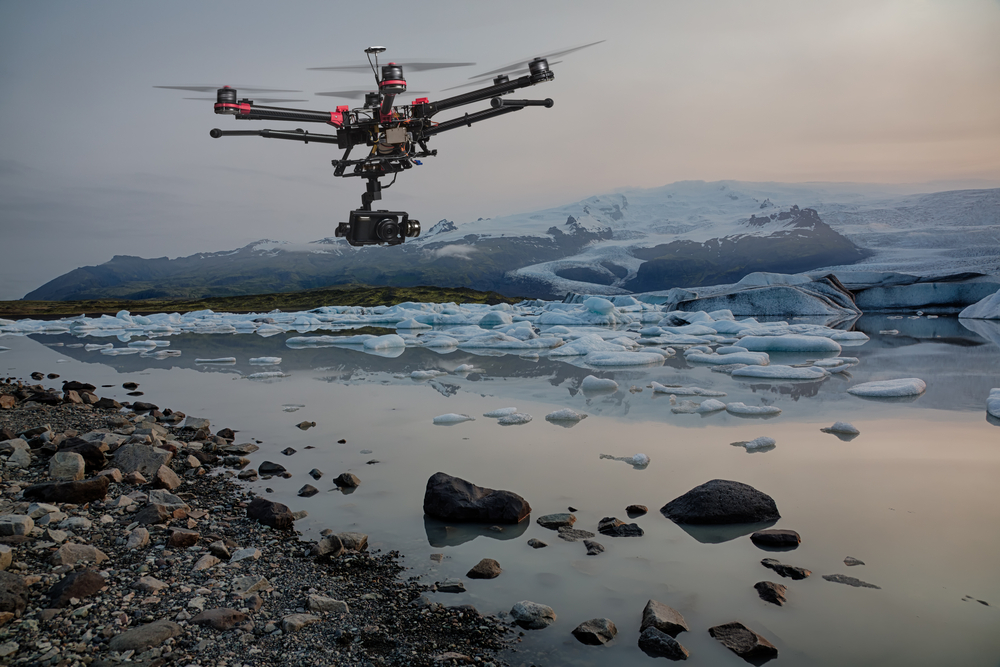 Now, separating that technology from aerial devices has resulted in the DJI Ronin, a handheld gimbal stabilizer for impressive videography.
Now, separating that technology from aerial devices has resulted in the DJI Ronin, a handheld gimbal stabilizer for impressive videography.
Whether you are needing visual communication to improve your company's branding or simply just to share your message with the world, now is the best time to do it. Feel free to contact ICOSA Media Services today to discuss turning your vision into reality.

